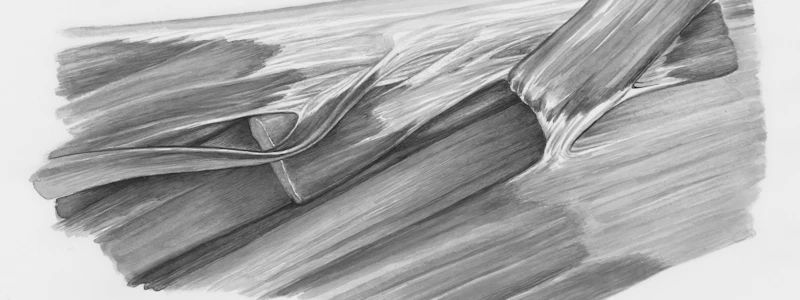Podcast
Questions and Answers
What type of bone is represented by the following: humerus, radius, ulna, femur, tibia, fibula?
What type of bone is represented by the following: humerus, radius, ulna, femur, tibia, fibula?
- Irregular
- Flat
- Long (correct)
- Short
What are the two types of short bones?
What are the two types of short bones?
carpals and tarsals
Which of the following bones is classified as flat?
Which of the following bones is classified as flat?
- Vertebrae
- Clavicle (correct)
- Femur
- Humerus
Name an example of an irregular bone.
Name an example of an irregular bone.
What is the name of the sesamoid bone commonly known as the kneecap?
What is the name of the sesamoid bone commonly known as the kneecap?
The cervical vertebrae are shaped like an ______ and are ______.
The cervical vertebrae are shaped like an ______ and are ______.
The thoracic vertebrae are shaped like a ______ and are ______.
The thoracic vertebrae are shaped like a ______ and are ______.
The lumbar vertebrae are shaped like a ______ and are ______.
The lumbar vertebrae are shaped like a ______ and are ______.
Flashcards are hidden until you start studying
Study Notes
Bone Shapes
- Long Bones: Include humerus, radius, ulna, femur, tibia, and fibula; characterized by length exceeding width, primarily involved in movement.
- Short Bones: Examples are carpals and tarsals; these bones are approximately equal in length and width, providing support and stability with little movement.
- Flat Bones: Such as the clavicle, scapula, sternum, and ribs; these bones provide protection to internal organs and serve as attachment points for muscles.
- Irregular Bones: Include vertebrae, pelvis, and facial bones; these have complex shapes that do not fit into other categories, serving various functions including support and movement.
- Sesamoid Bones: The patella is the main example; these bones are embedded within tendons and protect them from stress and wear.
Vertebrae Classifications
- Cervical Vertebrae: Have an oval shape and concave surfaces; consist of seven vertebrae in the neck region, accommodating a range of head movement.
- Thoracic Vertebrae: Feature a heart shape and convex surfaces; consist of twelve vertebrae in the upper back, providing attachment for ribs and stability to the chest.
- Lumbar Vertebrae: Resemble a kidney shape with concave surfaces; consist of five vertebrae in the lower back, designed to bear the weight of the upper body and allow flexibility.
Studying That Suits You
Use AI to generate personalized quizzes and flashcards to suit your learning preferences.



